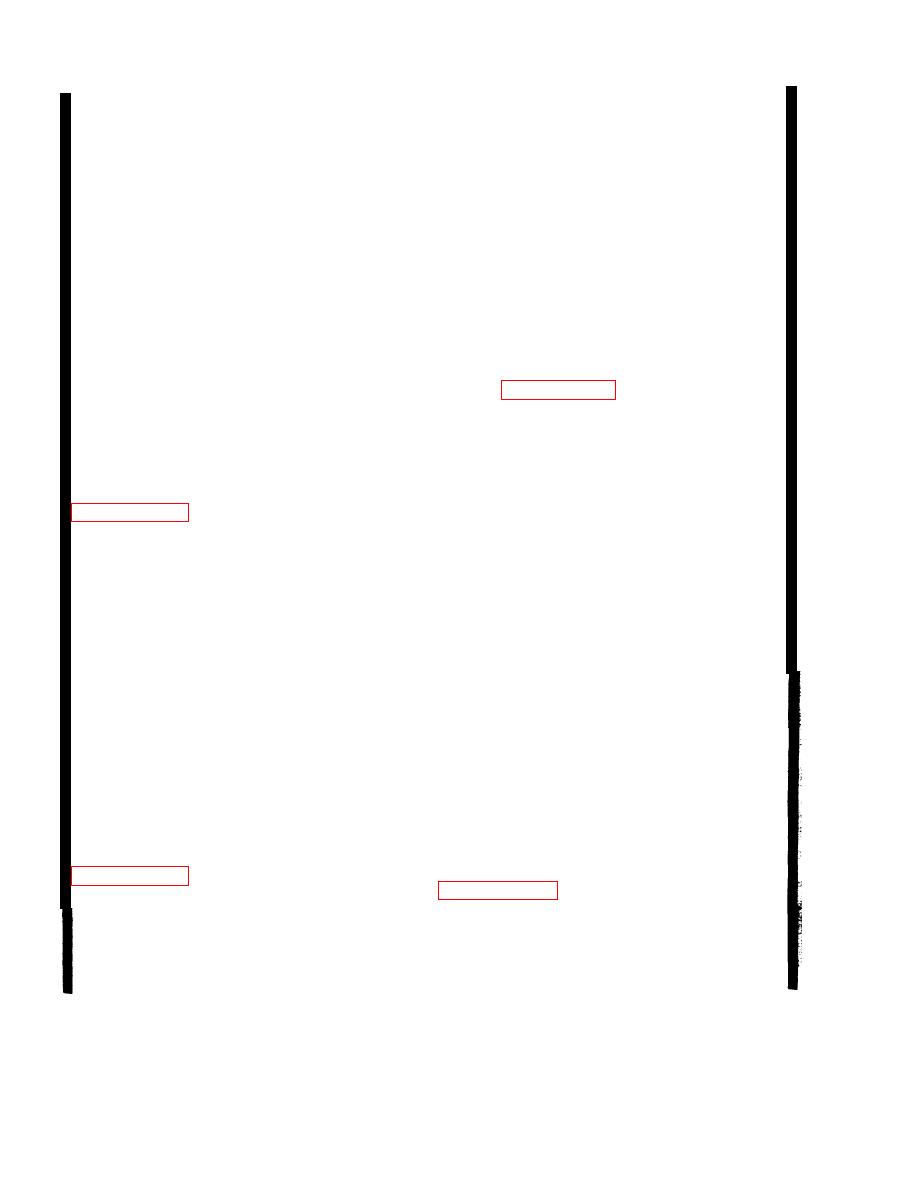 |
|||
|
|
|||
|
Page Title:
Composition Pulse Position Test |
|
||
| ||||||||||
|
|
 TM 11-6625-667-45/NAVAIR 16-30APM123-2/T0 33A1-3-367-22
NOTE
MEAS dial counterclockwise until the test set
If necessary, adjust module Al0 video
REJECT lamp is on, and then clockwise until the
enable delay control A10R7 to obtain
ACCEPT lamp just turns on.
proper delay.
j. Note the position of the outside pulse with
respect to center (1090 MHz) frequency marker.
d. Disconnect the oscilloscope CHANNEL A
Calculate the frequency at which the outside
and CHANNEL B cables from their test points.
pulse appears by subtracting .5 MHz for each
e. Connect the CHANNEL A cable to test
division on the oscilloscope. Note this frequency
point A8TP2 and the CHANNEL B cable to test
as F1.
point A9TP4. Measure the delay between the
k. Using the procedure in j above, adjust the
leading pulse on CHANNEL A and the trailing
AN/TPM-25A MEASUREMENT FREQ MEAS
edge of the pulse on CHANNEL B. The delay
dial clockwise and then counterclockwise to
should not exceed 6 s.
determine the upper frequency. Note this
7.1-8. Video Reply and Comparison Pulse
frequency as F2.
Width Test
Frequency F1 from frequency F2. Bandwidth
a. Perform the initial test setup procedures
Should be 6.5 +1 MHz.
given in paragraph 7.1-4.
m. Determine center frequency by adding
frequencies F1 and F2 and then divide by two.
point A11TP1.
Center frequency should be 1090 0.5MHz.
c. Set the test set CODE and AN/TPM-25A
SIF REPLY CODE controls to 0010.
7.1-6. Receiver Sensitivity
d. Set the oscilloscope TIME BASE A
a. Perform the initial setup procedures given in
TIME/CM control to 0.2 s.
e. Adjust the DELAY TIME MULTIPLIER
b. On the AN/TPM-25A, adjust the SUM
control to position the pulse for pulse width
ATTEN dial counterclockwise until the test set
measurement.
REJECT lamp is on and then clockwise until the
f. Measure the video pulse width. It should be
ACCEPT lamp is just on.
0.7 (+0.0, -0.05) s.
c. Note AN/TPM-25A SUM ATTEN dial
NOTE
reading. Add this number to 1090 MHz insertion
If necessary, adjust module All pulse
loSS of AN/TPM-25A cable 139526. The result
width control A11R6 to obtain the
should be -9 1 dBm.
required performance standard.
NOTE
g. Disconnect the oscilloscope CHANNEL A
If necessary, adjust sensitivity by first
cable from test point A11TP1 and connect the
adjusting the AN/TPM-25A SUM
cable to test point A11TP2. The width of the
ATTEN dial to -9, dBm unless the
comparison pulse should be 0.5 0.01 s.
1090 MHz l0SS of AN/TPM-25A cable
NOTE
139526 and then adjusting module A8
If necessary, adjust comparison pulse
sensitivity control A8R5 until test set
width control A11R15 to obtain the
barely indicates ACCEPT.
required performance standard.
7.1-7. Video Enable Delay and Gating Tests
7.1-9. Composition Pulse Position Test
a. Perform the initial setup procedures given in
a Perform the initial setup procedures given in
b. Connect oscilloscope CHANNEL A to
b. Connect the oscilloscope CHANNEL B
A10TP5 and CHANNEL B to A10TP6.
cable to test point A11TP2.
c. Measure the delay from the leading edge of
c. Connect the CHANNEL A cable to test
pulse on CHANNEL B to the leading edge of the
point A11TP1.
pilse on CHANNEL A. The video enable delay
d. Set the oscilloscope HORIZONTAL
should be 1.8 0.5 s.
7.1-4
change 5
|
|
Privacy Statement - Press Release - Copyright Information. - Contact Us |